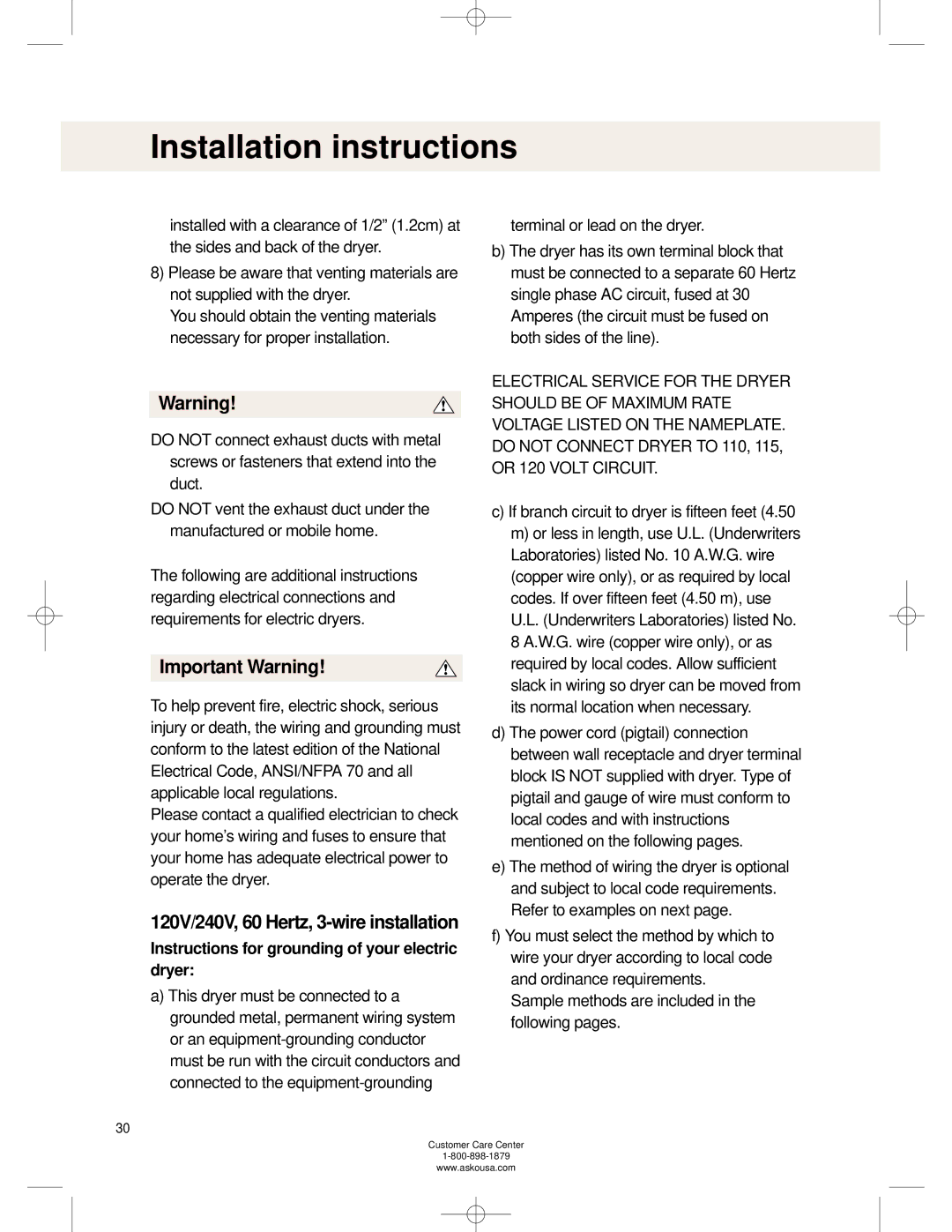
Installation instructions
installed with a clearance of 1/2” (1.2cm) at the sides and back of the dryer.
8)Please be aware that venting materials are not supplied with the dryer.
You should obtain the venting materials necessary for proper installation.
Warning!
DO NOT connect exhaust ducts with metal screws or fasteners that extend into the duct.
DO NOT vent the exhaust duct under the manufactured or mobile home.
The following are additional instructions regarding electrical connections and requirements for electric dryers.
Important Warning!
To help prevent fire, electric shock, serious injury or death, the wiring and grounding must conform to the latest edition of the National Electrical Code, ANSI/NFPA 70 and all applicable local regulations.
Please contact a qualified electrician to check your home’s wiring and fuses to ensure that your home has adequate electrical power to operate the dryer.
120V/240V, 60 Hertz, 3-wire installation
Instructions for grounding of your electric dryer:
a)This dryer must be connected to a grounded metal, permanent wiring system or an
30
terminal or lead on the dryer.
b)The dryer has its own terminal block that must be connected to a separate 60 Hertz single phase AC circuit, fused at 30 Amperes (the circuit must be fused on both sides of the line).
ELECTRICAL SERVICE FOR THE DRYER SHOULD BE OF MAXIMUM RATE VOLTAGE LISTED ON THE NAMEPLATE. DO NOT CONNECT DRYER TO 110, 115, OR 120 VOLT CIRCUIT.
c)If branch circuit to dryer is fifteen feet (4.50 m) or less in length, use U.L. (Underwriters Laboratories) listed No. 10 A.W.G. wire (copper wire only), or as required by local codes. If over fifteen feet (4.50 m), use U.L. (Underwriters Laboratories) listed No. 8 A.W.G. wire (copper wire only), or as required by local codes. Allow sufficient slack in wiring so dryer can be moved from its normal location when necessary.
d)The power cord (pigtail) connection between wall receptacle and dryer terminal block IS NOT supplied with dryer. Type of pigtail and gauge of wire must conform to local codes and with instructions mentioned on the following pages.
e)The method of wiring the dryer is optional and subject to local code requirements. Refer to examples on next page.
f)You must select the method by which to wire your dryer according to local code and ordinance requirements.
Sample methods are included in the following pages.
Customer Care Center
www.askousa.com
